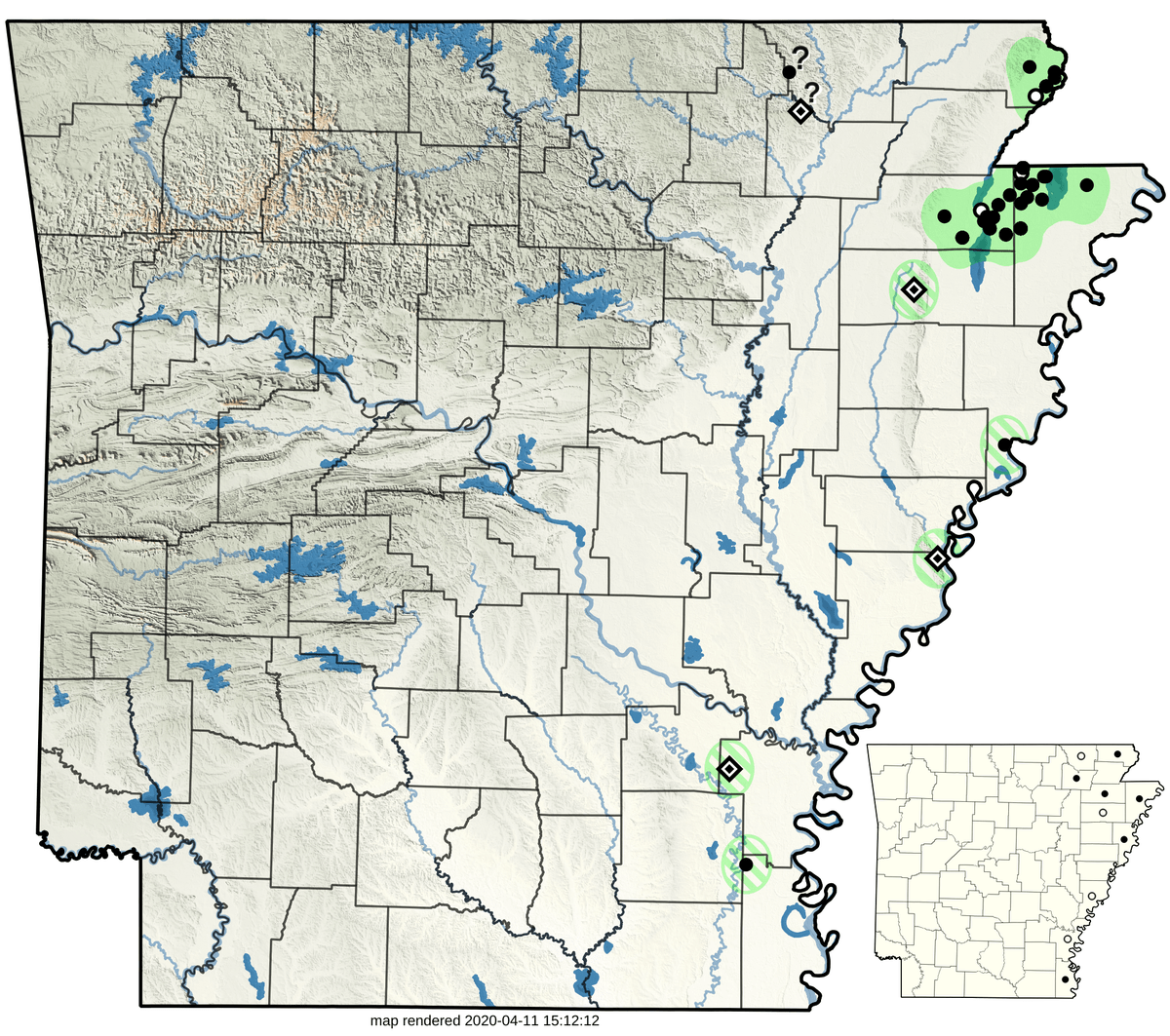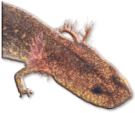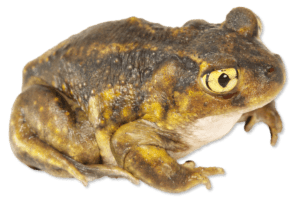Arkansas Herpetological Atlas 2019
This species is represented by 126 records from 13 sources: 119 museum ( ), 0 literature (
), 0 literature ( ), 0 research (
), 0 research ( ), and 3 observation (
), and 3 observation ( ), with 4 additional Trauth et al. (2004) locality points remaining unsourced (
), with 4 additional Trauth et al. (2004) locality points remaining unsourced ( ). It has been museum vouchered for 6 of 75 counties (
). It has been museum vouchered for 6 of 75 counties ( ), with 4 additional counties having other forms of reported occurrence (
), with 4 additional counties having other forms of reported occurrence ( ). Years of collection range from 1898 to 2017.
). Years of collection range from 1898 to 2017.
This species has recognized occurrence in northeast Arkansas. Scaphiopus holbrookii and S. hurterii were formerly considered synonymous, so spotty occurrences along the Mississippi River in eastcentral and southeast Arkansas may lack taxonomic clarity. It has not been documented outside of Clay, Craighead, or Mississippi County since the 1970s, except for an anecdotal photographic report from Chicot County in 2016 (P. Tomerlin, pers. comm.). Three of the historical localities reported by Trauth et al. (2004) remain unsourced. A record west of Ravenden Springs, Randolph County (ASUMZ 3945 from 1975), is questionable, as are a number of records traced to the Ozark Biological Laboratory (OBL), Imboden, Lawrence County. These latter records may have come from the vicinity of Walnut Ridge, Lawrence County, on the basis of likely suitable habitat for this species and sampling likelihood by the OBL director.



































